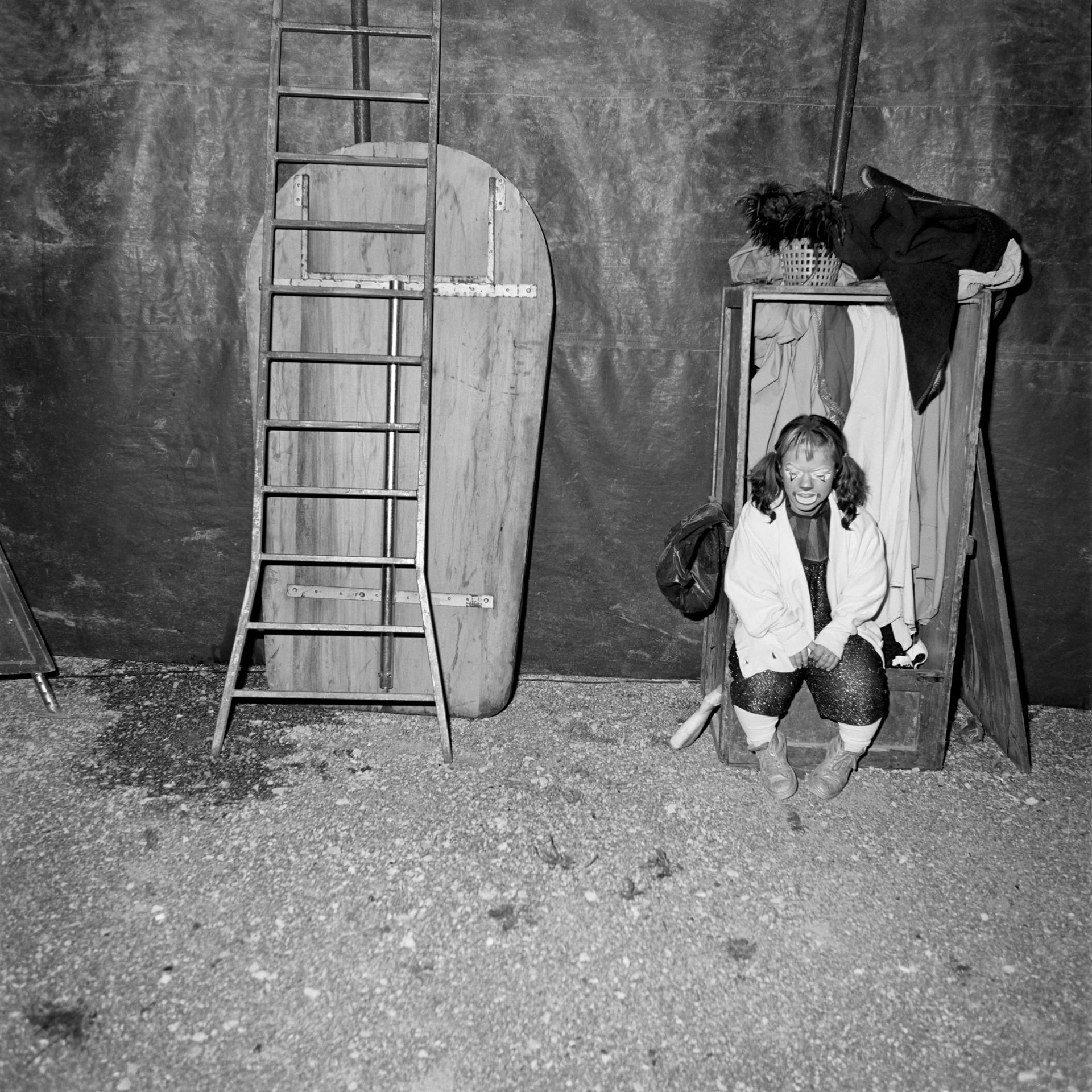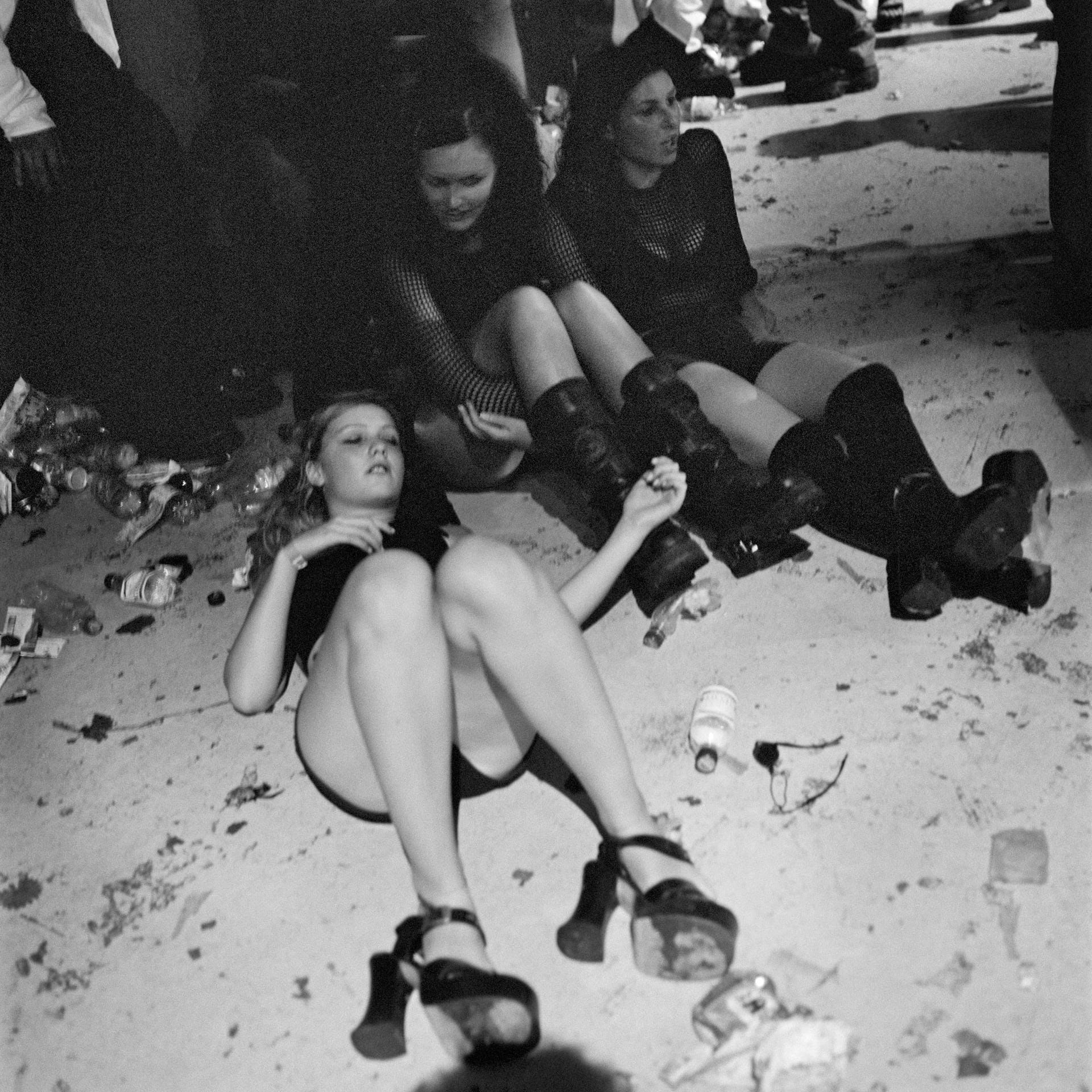1986–2010
Zurich – Brief Encounters
Around the mid-1980s, somewhat lost as I thought about my next long-term project (it would be the Great Wall of China) but also anxious to train my eye, I photographed the people I randomly encountered in my neighborhood—in hopes of producing something like Diane Arbus’ work—and quickly gave up. Hers were journeys into internal hearts of darkness; mine increasingly appeared to be geographically labeled. As remote as I envisaged them to be, they did at least hold the hope of return.
In the 1990s, back from covering calamities and conflicts, I realized how tightly connected the Golden Triangle and Zurich’s needle park were. The drug scene had been kicked out of the Platzspitz from behind the National Museum and had drifted into the small park in front of the house where I lived and worked. I saw body bags brought away on stretchers, faced knife-wielding junkies, and deep into the night called the ambulance to collect those wasting away on the threshold of the house. Things were too close to photograph. The needle trauma became such an eyesore that the museum and my (now) Advanced School of Design considered temporary closure to deny access to the toilets—and, as I reckoned, because there was a compatibility problem between reality and concepts. One morning the drug scene was flushed out. The disused Letten railyard just across the River Limmat was transformed into Europe’s largest open scene, becoming the site of homicides and making international headlines. Finally, the city was able to secure the support of the cantonal and federal governments: Letten was cleared, its soil detoxified and a lido installed instead.
By 2010, when I moved away from Zurich, Kreis 5, which had emerged as an industrial quarter in the 19th century due to its proximity to the main railway station and the river, had undergone some fundamental changes: Its shipyards had been turned into theaters, its breweries into art galleries, the arches of the railway viaduct into shops. The latter monument had been immortalized by Jean-Pascal Imsand, a photographer friend living down Limmatstrasse, whose studio overlooked the arches, and who died too young, just as he was about to finish a series of photographs for his Kreis 5 project. Among the images in that series were some fine portraits taken in a thrift store, whose poses and light are reminiscent of Lewis Hine’s Ellis Island immigrants. The former cogwheel factory, in the abandoned halls of which René Burri and I had conceived an exhibition on photography in DU magazine back in 1995, had been replaced by the Prime Tower, which for a time was Switzerland’s tallest building, its occupants the internationally indistinguishable flatscreen proletariat. Craft, design, and the arts had also moved to Zurich West, and under the new label and umbrella of Zurich University of the Arts had found a new home in a dairy plant tailored to the needs of the new extended curriculums.
En Route
- 1987–the presentEntanglements
- 1977–the presentFaces
- 1991Iran – Kurdish Exodus
- 1990Georgia – Journey Through the End of an Era
- 1989Istanbul – Tanneries
- 1987China – Between the Walls
- 1987China – Undermining Buddha
- 1986Prague – Sentimental Journey
- 1986Egypt – Small Tour
- 1986–2010Zurich – Brief Encounters
- 1982–1986Silhouettes and Accessories
- 1977–1980Formation
- 1972–1976First Exposures



